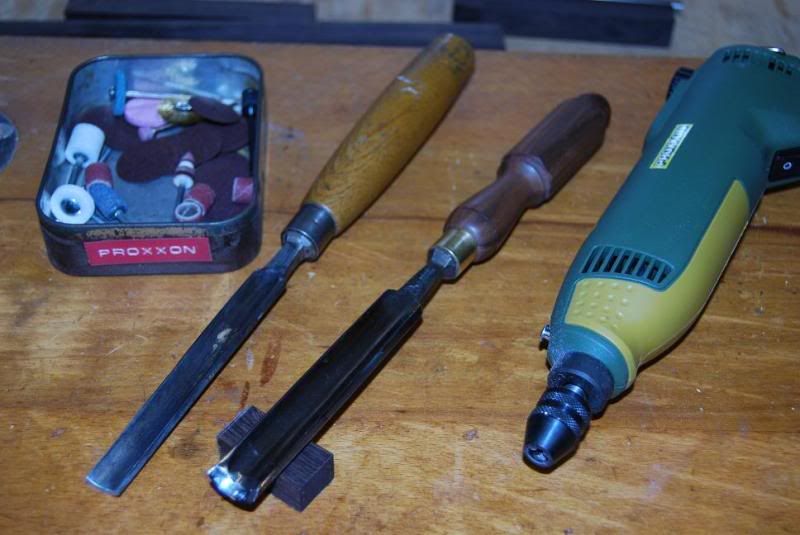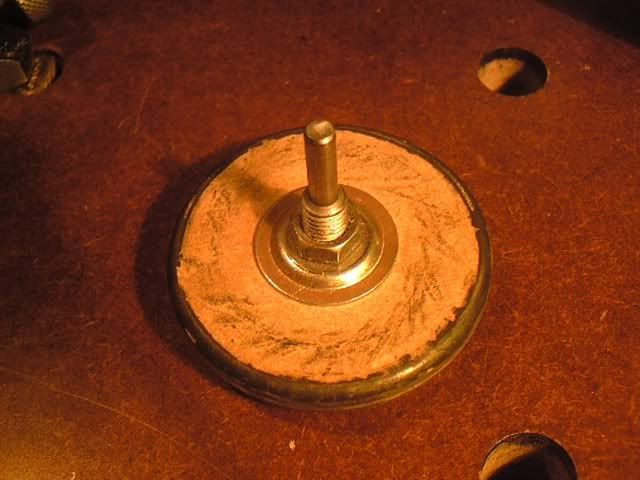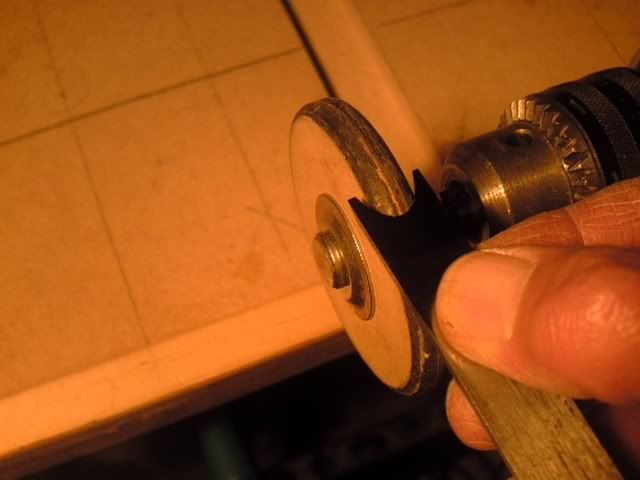woodbloke
Established Member
Got a project coming up where I'm going to need scribing gouge(s) of various sizes. Martin the Woodkateer kindly let me have one that I've re-handled in some English Walnut and then re-ground. I don't know if you've ever tried to re-grind one of these things, but they're fiendishly difficult :x I used a Proxxon mini-drill fitted with a conical wheel for the primary grind and then a smaller one to put on a bevel. I then polished the bevel with felt wheel with a bit of Jewelers Rouge on it, the backs were kept dead flat and finished on the Spyderco:

The other gouge in the pic is one that I picked up from PFT yesterday that was 'orribly mangled...I ground if flat and square on the Tormek last night. I've got to sort it out at the weekend and also make a new handle for it - Rob

The other gouge in the pic is one that I picked up from PFT yesterday that was 'orribly mangled...I ground if flat and square on the Tormek last night. I've got to sort it out at the weekend and also make a new handle for it - Rob




































